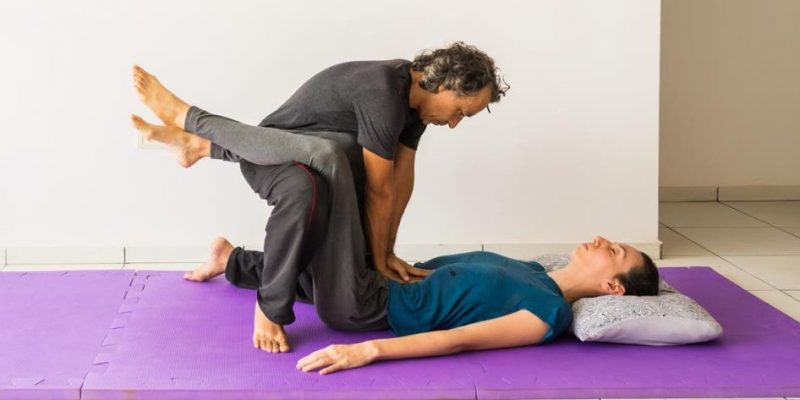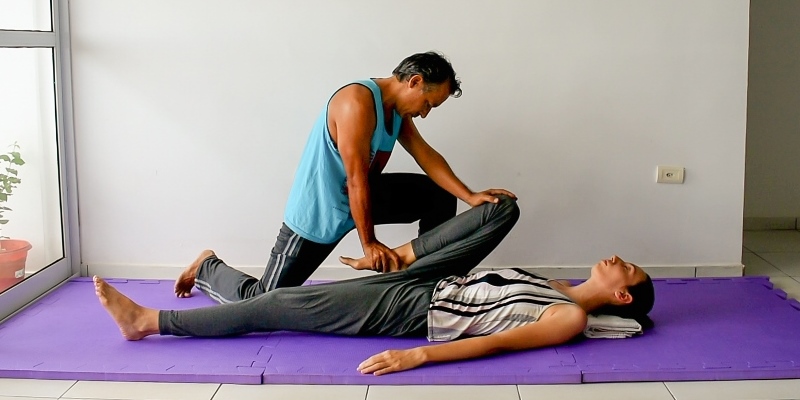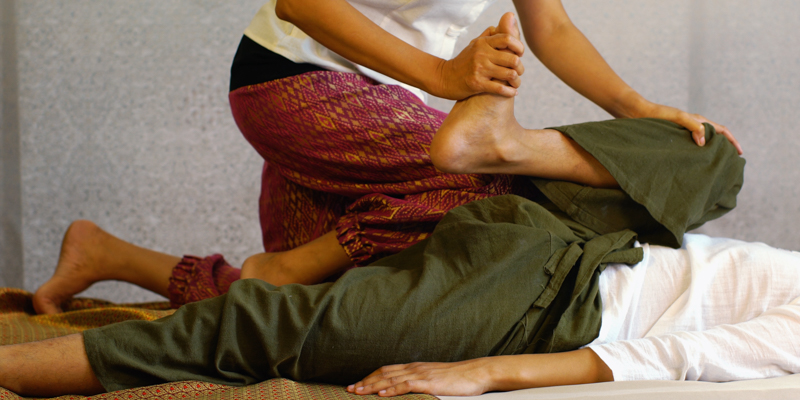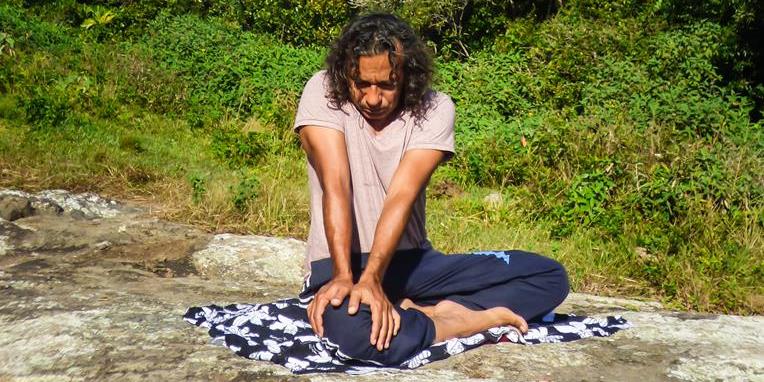
In Thai Massage there’s this famous thing — some would prefer the word notorious — called “good pain.” At the same time there are quite a few definitions of what “good pain” is or should be. But to keep things simple: I’ll just give you my view.
“Good pain” is pain in the moment — it doesn’t stay. It’s most of the time “inflicted” when applying acupressure (generally when using thumbs, knees or elbows) on, for the particular recipient, sensitive areas. It also means that after releasing the pressure, the pain is gone. If the pain stays, it’s “bad pain.” It means you inflicted enduring pain.

“Good pain” can occur in muscle, nerve and connective tissue area’s which are tensed, misaligned, knotted or tangled. These are by definition sensitive area’s. It generally means (in the view of a Thai Massage practitioner) we’ve found an area which needs to “be worked on.”
Although the area of “good pain” is often a problem spot in itself, it can be a so-called trigger point. The latter means that the specific location radiates inexplicable pain to another or broader area. And thus dissolving or releasing a trigger point suggests also dissolving the pain in this other area.
On a plain practical client-practitioner level, it’s wise to inform a client of the “good pain” scenario. Especially to first-time Thai Massage clients who don’t always understand the pain you (can or will) give them. They assume it will cause them enduring pain. It scares them. And locks them up. It makes them tensed and defensive, which is exactly the opposite of what you’re trying to achieve.
I know, some say Thai Massage shouldn’t be painful. But I say — it often does. It can be. But only in the moment. And I think there’s an unanticipated advantage in it. Real and genuine “good pain” vanishes after release. It makes the relaxation afterwards even greater.
You must agree — it’s of no doubt a sublime and blissful state when both torture and torturer have left the building!

















